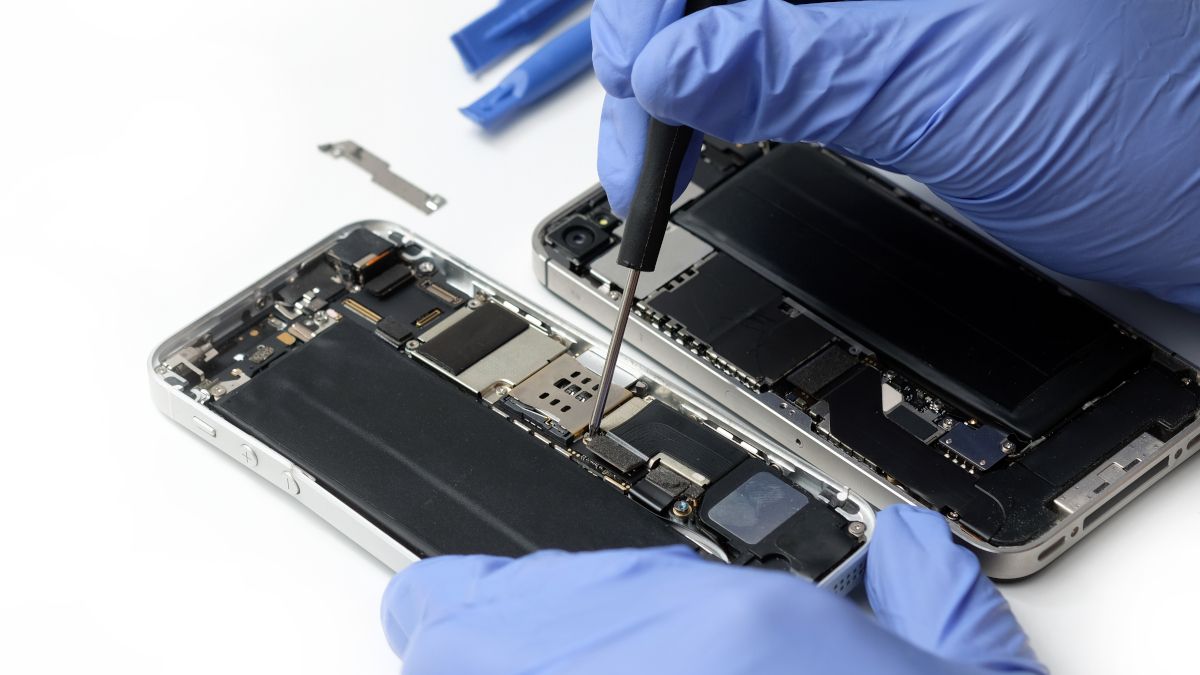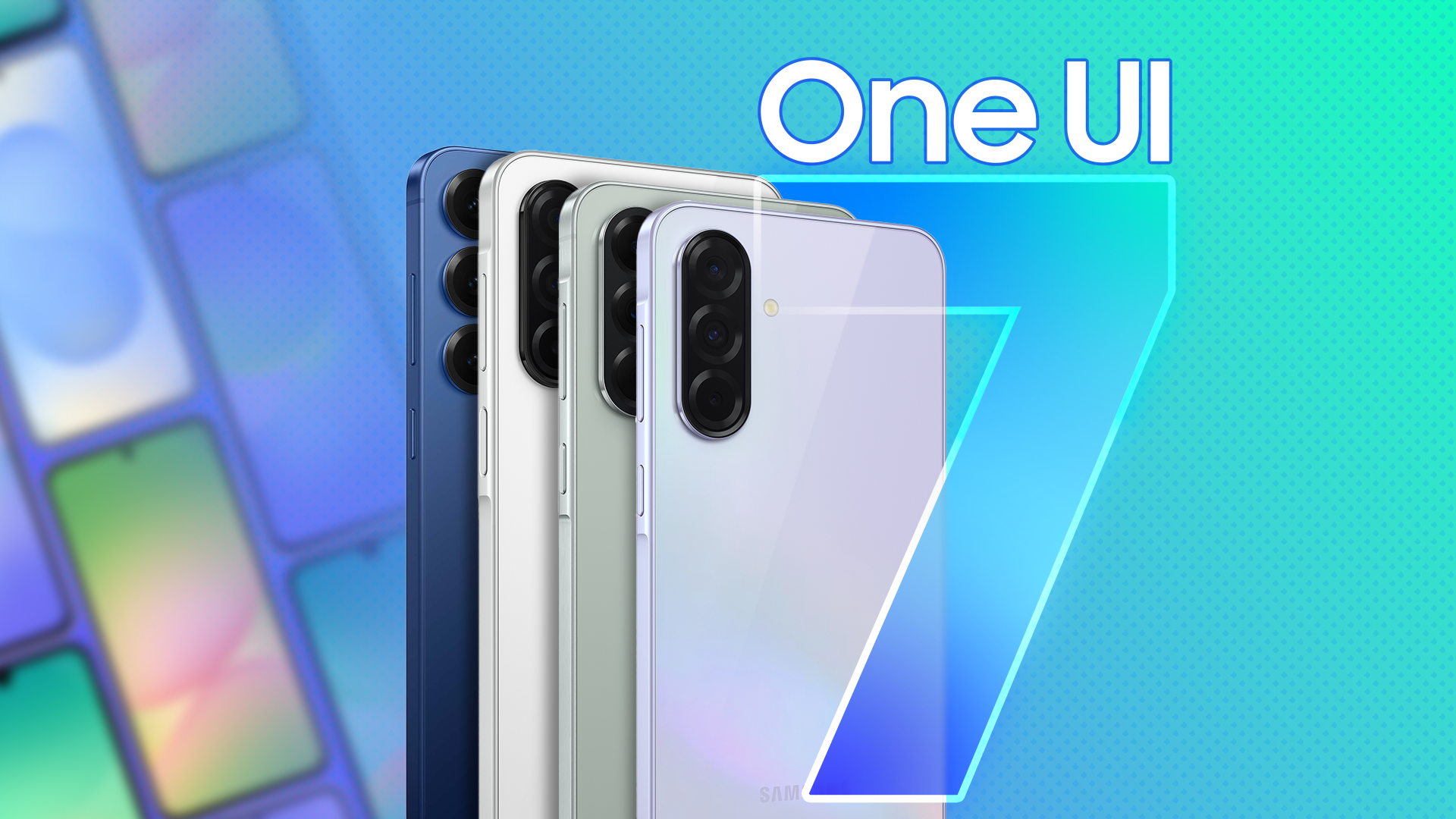I like to get the most bang for my buck, and there are plenty of Android brands that offer near-flagship specs at an affordable price. Yet, I’m inclined to buy and recommend Samsung’s Galaxy A series phones, which often don’t deliver the best value in the mid-range segment.
8
Longer Software Support
There aren’t many companies other than Samsung that offer more than four years of major Android updates on their flagship phones, let alone mid-range ones. Only Google comes to mind. Extended software support increases your device’s longevity, so you don’t have to upgrade sooner than necessary.
A lot of the time, the only component that makes your phone feel obsolete is the degraded battery, which you can easily get replaced after a few years. But if the manufacturer drops support much earlier, you’re forced to upgrade if you want the latest Android features and security patches.
Samsung usually offers four years of software updates on its Galaxy A series, but with the A56, the company has bumped that up to six years—just one year short of what its flagships get. This might seem unnecessary if you tend to upgrade frequently, but for a growing number of people who hold on to their phones for longer, it’s helpful indeed.
7
Service Centers Are Easy to Find
Having a physical service center, you can visit to seek assistance from a qualified technician if anything goes wrong with your device is far more valuable to most people than having the best specs and features. No matter where you are, chances are there’s a Samsung-authorized service center nearby, making repairs and maintenance less of a hassle.
This is a stark contrast to brands like OnePlus or Google, which often have fewer service centers, especially in smaller cities. Even if their mid-range phones offer better specs for the price, getting them repaired can be a nightmare. The unavailability of spare parts may require you to ship your phone to another city, which can greatly increase waiting times.
With Samsung, walk-in repairs are common, and spare parts are easier to source. Whether it’s a cracked screen or a battery replacement, you’re likely to get it fixed faster and with minimal effort. This peace of mind is a huge factor in my buying decision.
6
Samsung Phones Are Easier to Resell
When it’s time to upgrade, selling a used Samsung phone is usually much easier, given the company’s reputation. Even mid-range models are likely to attract decent offers, especially if they’re well-maintained. The more offers you receive, the more you can compare and negotiate and pick one you’re happy with.
Android phones, in general, don’t retain their resale value well, certainly not as well as iPhones, but Samsung’s longer software support should help change this because the buyer wouldn’t be settling for an outdated device.
Trade-ins are easier, but you’re more likely to find better value if you sell your old phone on a marketplace. This is because when you trade in your old phone, the company disassembles it and recycles it for parts, whereas a buyer intends to use it as their daily driver in most cases.
5
One UI Is Still Unmatched
I’m more than aware of the amount of bloatware in One UI and that many pre-installed Samsung apps are just poor alternatives to existing Google apps most people already use.
That said, I’m willing to argue it’s still the best Android skin out there, not only because some Samsung stock apps are actually better than Google’s, but mainly because of the plethora of useful features it has, some of which are unique to One UI.
Modes and Routines, for example, is the most comprehensive native device automation tool on any smartphone ever. You can create custom routines to perform all sorts of tasks without necessarily requiring your input.
I’ve set routines on my phone that auto-enable Location when I open Google Maps and ride-sharing apps, Auto-Rotate when I open streaming apps, Battery Protection during overnight charging, mobile data when the Wi-Fi strength drops, DND during bedtime, and many more.
Edge panels is another feature I use almost constantly. It can house your favorite apps and app pairs, show you the weather, play music, add reminders, store app shortcuts, show your clipboard items, and do a lot more. And if you’re obsessed with customization like me, Samsung’s Good Lock suite of apps is all you’ll ever need.
4
Plenty of Third-Party Accessories
One of the underrated perks of buying a Samsung mid-range phone is the sheer variety of third-party accessories available. Samsung devices have a massive global user base, making them a priority for accessory manufacturers.
This not only gives you more customization choices but also helps you save money compared to buying first-party accessories. In contrast, lesser-known brands often suffer from a lack of aftermarket support, forcing users to settle for whatever is available.
3
The Galaxy Ecosystem Is Underrated
The convenience of having all your gadgets work together seamlessly can’t be put on a spec sheet, but if that’s what you’re after, Samsung is probably your best bet.
If you want to share files across Galaxy devices, Quick Share is the fastest way to do it. When you get a call while watching a video on your tablet, Galaxy Buds auto-switch to your phone.
You can also connect your Galaxy phone to your Windows computer using Samsung Flow or Link to Windows. Once connected, you can share files between the devices, sync notifications, and clipboard content, and mirror your phone onto a larger screen.
Keep in mind that Samsung also makes appliances, and you can control compatible ones on your phone using the SmartThings app.
2
No Annoying System Ads
Chinese brands are known for offering a strong price-to-performance ratio, though this often comes with the trade-off of a user interface cluttered with ads. A prominent example of this is Xiaomi, the third-biggest smartphone company by market share after Apple and Samsung.
In an attempt to offset the low price of its phones, the company serves ads within several major system apps, after-app installations, and via notifications. It even pre-installs a bunch of third-party apps and games on top of its own bloatware for the same reason.
Samsung, while not free from criticism, has taken significant strides in improving the user experience. In the past, the company sent users push notifications to promote its new products and displayed ads in the Galaxy Store, Samsung Pay (now Samsung Wallet), Health, Weather, and Themes.
Fortunately, this issue has largely been addressed. Samsung has almost entirely removed in-app ads from One UI, although its entry-level phones still try to get you to install what are labeled “recommended apps” when you first boot the device.
1
Fewer Privacy Concerns
Samsung is primarily a hardware company, so its business model doesn’t rely on data-driven advertising like Google. This is a big reason I find it easier to trust Samsung devices in general, even though I’ve been wanting to switch to Pixel for a while now.
It’s not just Google, though. In value-oriented markets, people are generally more open to data collection if it means a cheaper price tag, so lesser-known brands prompt users to grant system apps excessive permissions to function.
This is not the case with Samsung. Even if you buy the cheapest Galaxy phone you can find, you can rest assured it’s not going to ask you for unnecessary permissions or use your data for targeted advertising.
Most people use their phones for doing basic tasks, so obsessing over specs is not very productive. Your phone is the most important piece of tech you own, so making sure it’s reliable, secure, won’t drown you in ads, and will continue to be supported for a long is key.






